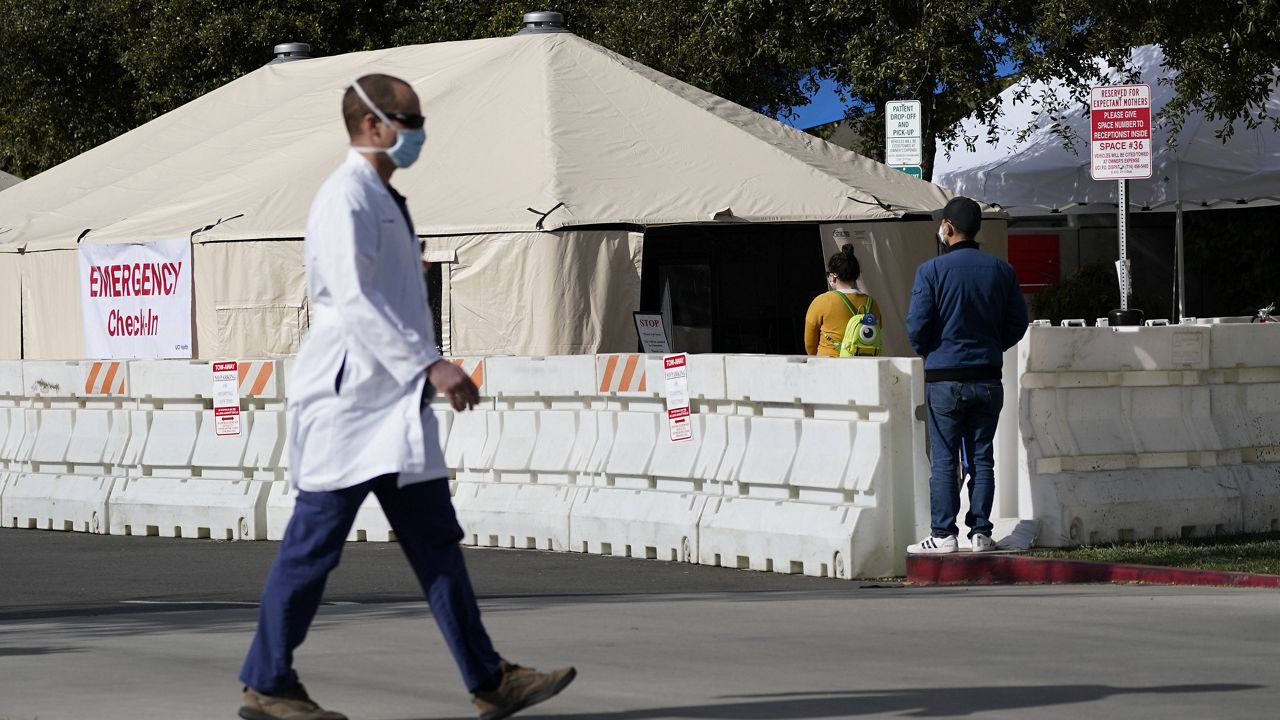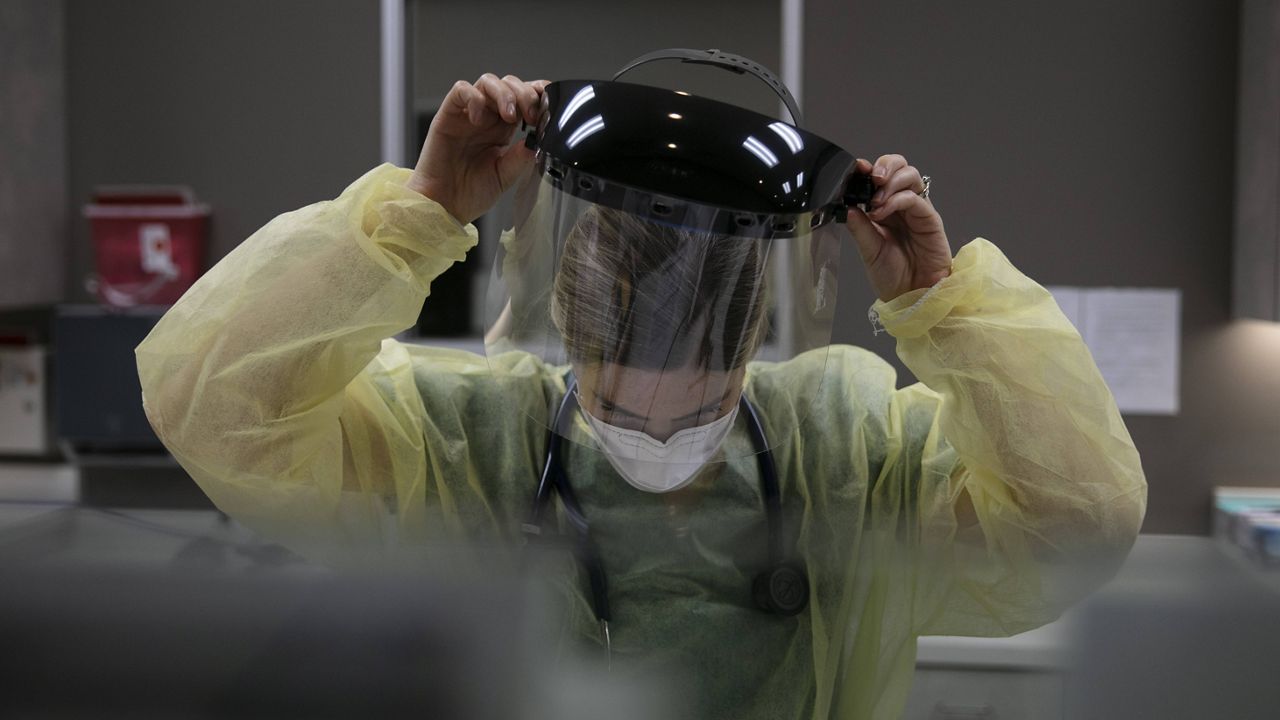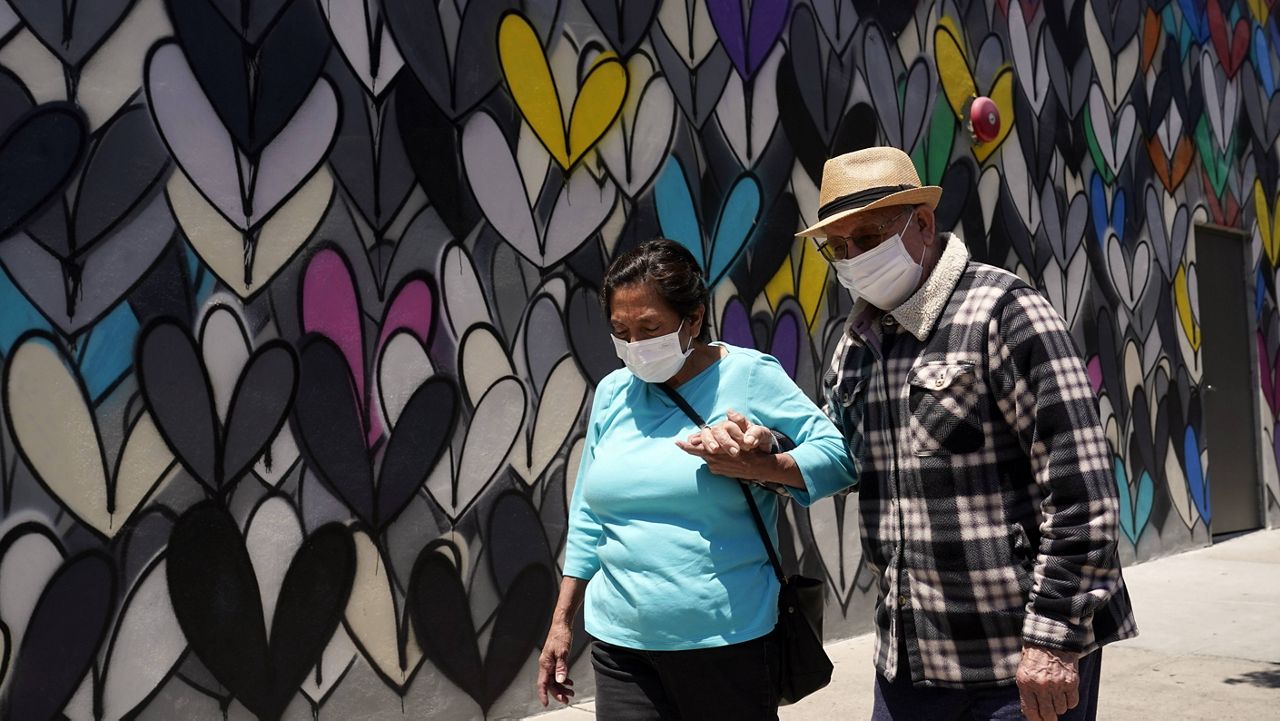SANTA ANA, Calif. (CNS) — Orange County's COVID-19 positivity rates and hospitalizations continued to improve Tuesday, but the county also logged 53 more fatalities as death reports from the holiday case surge continue to roll in.
What You Need To Know
- The OC adjusted daily case rate per 100,000 population dropped from 46.6 last week to 39 on Tuesday
- The test positivity rate on a seven-day average, with a seven-day lag, dropped from 12.9% to 10.9%
- The county on Tuesday logged 768 coronavirus cases
- It's the first time since Dec. 31 that the health department has reported fewer than 1,000 cases
The adjusted daily case rate per 100,000 population dropped from 46.6 last week to 39 on Tuesday, and the test positivity rate on a seven-day average, with a seven-day lag, dropped from 12.9% to 10.9%. The numbers for the state's color-coded tier framework are updated on Tuesdays.
The county's Health Equity Quartile Positivity Rate, which measures the cases in highly affected, needier parts of the county, declined from 16.6% last week to 13.9%.
To move to the less-restrictive red tier from the top — purple — tier in the state's coronavirus regulatory system, the county has to improve to 4 to 7 new daily cases per 100,000 and a 5% to 8% positivity rate with a health equity quartile at 5.3% to 8%.
The number of coronavirus patients in hospitals in Orange County continued its downward trend, declining from 1,362 Monday to 1,330 on Tuesday, with the number of patients in intensive care dropping from 384 to 370.
The county's state-adjusted ICU bed availability remains at zero, and the unadjusted figure decreased from 10.9% Monday to 10%. The state created the adjusted metric to reflect the difference in beds available for COVID-19 patients and non-coronavirus patients.
"Look at the hospital numbers, that's a dramatic drop," said Orange County CEO Frank Kim. "The ICU numbers are on an accelerating downward path, which is good."
Kim said the county's positivity rate has declined nearly 50% since its peak Jan. 10.
The county on Tuesday logged 768 coronavirus cases, the first time since Dec. 31 that the health department has reported fewer than 1,000 cases. The cumulative case total stands at 234,162, according to the Orange County Health Care Agency, which also reported 8,625 tests to bring the total to 2,701,938.
Of the fatalities reported Tuesday, nine were skilled nursing facility residents and 10 were assisted living facility residents. Of the total fatalities since the pandemic began, 849 were skilled nursing facility residents and 347 were assisted living facility residents.
Since Sunday, the county has logged 144 coronavirus-related fatalities. Last week, the county reported 393 coronavirus deaths, up from 305 the week before.
The death reports are staggered because they come from a variety of sources and are not always logged immediately.
The death toll for January stands at 627. On Jan. 3, 58 people succumbed to COVID-19, the deadliest day since the start of the pandemic. The second and third most lethal days were Jan. 2, when 54 died, and Dec. 30, when 53 died. Fifty-two people died on Christmas Day.
December was the deadliest month during the pandemic, with 834 people succumbing to coronavirus.
Andrew Noymer, a UC Irvine professor of population health and disease prevention, predicted the county's death toll will reach 4,000 before March 1.
The outbreak in the county's jails continued to decline. The number of inmates infected dropped from 27 on Monday to 25 on Tuesday, with one inmate hospitalized. The county is awaiting the result of 308 tests.
Kim said he was encouraged by news from the county's lobbyist that the federal government will begin sending a million doses of vaccine weekly to the nation's largest pharmacy chains, starting Feb. 11.
"To me, this is big news," Kim said. "This kind of restores the order in how people access healthcare. We're holding up this gap that currently exists, but ultimately vaccinations should happen through traditional healthcare delivery systems."
Kim said it makes sense to continue delegating authority to local governments for vaccinating the homeless or mentally disabled because local officials are best equipped to reach those people through clinics and shelters.
The county is responsible for distributing about 20% of vaccinations and hospital systems receive the rest of the state's allocations.
County officials expect that Johnson & Johnson will seek emergency authorization next week for its one-dose vaccine, which could be available by mid-month, Kim said.










